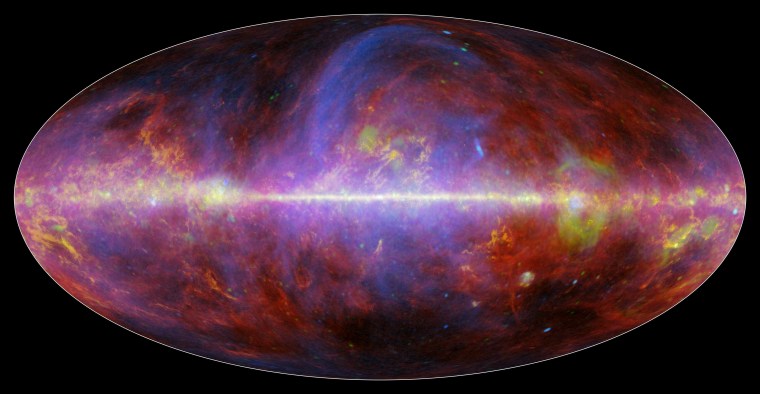Astronomers say the very first stars in the universe burst into existence more than 100 million years later than they previously thought.
A few hundred million years after the Big Bang, the light from some of the very first stars and galaxies lit up the universe and ended a period known as the "dark ages." New measurements by the European Space Agency's Planck satellite — which studied the cosmic microwave background, or the light left over from the Big Bang — indicate that this period of light began about 100 million years later than Planck's previous estimate. The new results are based on an additional year of observations recorded by the satellite.
"While these 100 million years may seem negligible compared to the universe's age of almost 14 billion years, they make a significant difference when it comes to the formation of the first stars," the University of Milan's Marco Bersanelli, a member of the Planck Collaboration, said in a statement.

Physicists Say Big Bang Dust-Up Has Fizzled Out
Some of the first stars and galaxies to be born in the early universe helped end what is often referred to as the universe's "dark ages." The stars not only lit up the skies with their light, but also cleared away a fog consisting of hydrogen atoms that had come to fill the cosmos. [The History of the Universe in Images]
This haze of gas that filled the universe blocked most wavelengths of light, which is why this time is referred to as "dark."
The powerful photons created by stars and galaxies ripped the atoms apart, or ionized them, which is why this era is known as reionization. Galaxies called quasars burst into existence around this time.
Observations by NASA's Hubble Space Telescope show that the universe was entirely clear of the hydrogen fog by about 900 million years after the Big Bang. But when did it begin?
Previous observations by Planck cited the start of reionization as being about 450 million years after the Big Bang. The new results used a larger data set, taken between 2009 and 2013, and pushed that measurement forward by 100 million years.
Because stars and galaxies drove the start of reionization, scientists with the Planck collaboration say the new measurement also indicates about when those stars and galaxies started forming.
— Calla Cofield, Space.com
This is a condensed version of a report from Space.com. Read the full report. Follow Calla Cofield on @Twitter. Follow Space.com on Twitter, Facebook and Google+.